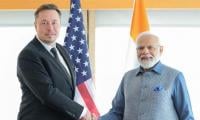We live in what has been termed as ‘the age of information’. But is it really not the age of misinformation? Social media – to which, according to research studies by groups such as the Pew Research Centre, more and more people around the world are becoming physically, psychologically and emotionally addicted – churns out one fake story after the other.
To add to that, a lack of critical thinking in our country as well as in so many others, has convinced people that plastic rice manufactured in China are, indeed, being sold to us, or rubber is mixed in our flour, or that worms have been allowed to infiltrate tea leaves.
The Pew Research Centre in its 2018 study puts forward two possible futures. The optimist view, held by 49 percent of the people interviewed, was that technological checks introduced into the realm of the Internet and social media would sieve out fake news and cast it aside. Another optimist view maintained that people would become savvy themselves and will learn to recognise the truth from fiction. The pessimists – comprising 51 percent of those who were surveyed – believed that we would be inundated by more and more fake news which many would take to be the truth.
In an excellent talk delivered at a seminar during the World Economic Forum at Davos, Bilawal Bhutto Zardari suggested that given the huge impact of fake news on people’s beliefs, including on politics and national events, school and college curriculums should perhaps include lessons that would teach children and young people how to distinguish between a fact and what is quite evidently false information.
However, this is not always easily achievable in a country like ours where people have a tendency to believe whatever is thrown at them through social media and, especially, television channels that often broadcast news to millions of people without doing any research or fact-checking. This is downright dangerous. As a consequence, we have people who fall for bizarre conspiracy theories such as the most recent one that suggested that the man who raped and murdered little Zainab held multiple bank accounts and had connections with an international child pornography racket. It is indeed shocking that such a news item even made it to the media as well as to the Supreme Court.
In our society, where we are told that conspiracy theories and a lack of trust over everything has existed for decades, the problem becomes even more convoluted. Websites such as Snopes.com and other tools that can help debunk the many myths that go around in cyberspace should perhaps be made a compulsory component of every computer, smartphone or other WiFi-enabled devices in our country. This could solve many problems.
The current situation allows people to put up ludicrous stories without any verification. These concern important political figures and artistes, among others. Malala Yousafzai is one popular target.
For reasons known only to our people, the teenager has been vilified for years. Social media projects a demonised image of a young woman from a conservative society who had the courage to speak out about her thoughts and rapidly develop ideas. Recent comments posted on videos of her speech delivered at the WEF, in which she spoke of the right of all women to dress as they please, to make their own choices in life and to take equal part in all activities, reflects how she is viewed by people. Posting photoshopped pictures of Malala with other major figures has also been a part of schemes that have been carried out, it appears, only to malign her as much as possible.
With the growth of the Internet, such problems have become widespread. Anyone can put up a story and have it circulated to a far larger number of people. The nature of social media is such that if used irresponsibly, it can spiral out of control. However, the mainstream media, which at least according to common assumption is run in a more controlled and regulated manner by trained professionals, can play a crucial role in curbing this problem. It could discredit the inflammatory and dangerously misinformed stories circulating in cyberspace by conducting its own research and ensuring that fact-finding is a part of its news handling process.
Unfortunately, while the proliferation of television channels has been welcomed in our country, we cannot say with any confidence that this has created a better environment than the one that existed during the many years when PTV used to be the sole source of information. Although many lies were propagated through the channel, people at least watched it with suspicion and were more capable of seeing through the clumsy propaganda and falsehood.
Today, the glamour of television and anchors who scream out about matters of all kinds in ‘breaking news’ bulletins have made it harder for people to distinguish between a factual and fake news. We appear to have been sucked into a world created by the media that is made up of strange theories, conjecture and wherein efforts are deliberately made to depict reality from one perspective only that conforms to the wishes and desires of those who control the media.
Social media is, of course, not controlled so directly. It has greatly benefitted the world in terms of the communication and free flow of information. It has increased knowledge and provided access to information; this should never be denied. But at the same time, there is a need – notably in our own country – to incorporate mental safeguards for people using these forums.
It is not always easy to tell a piece of fiction from reality. But there are giveaways and clues. Just as students are instructed in schools, colleges and universities to avoid using sources such as Wikipedia when conducting research work, the millions who use social media also need to be taught how to put in place basic safeguards. At the same time, in this age of high-speed information exchange, the tendency to spread misinformation to dozens, hundreds and even thousands, with the mere click of a ‘forward’ button needs some curbs.
We have over the last few months seen how falsified stories on the Internet can create panic within communities. There have been pictures used from incidents of other countries to suggest that the specific crime is rampant in our cities and areas. There have been accounts of other incidents which simply make no sense.
We live in dangerous times. There are many threats that stare us in the face every day. But this makes it all the more imperative for social media to evolve. If the mainstream media leads the way, then a sense of responsibility can be fostered among social media users. The mechanisms that exist even within the most arbitrarily run media houses suggest that there are people whose job it is to look at every news item that goes on air or into print. They can also use these systems to expose fake social media stories that have become a part of public discourse in various ways.
Sadly, journalists who are willing and able to follow the essential principles of journalism have been virtually ousted by our electronic media and sensationalism rules the day. This fits in perfectly within the sphere of social media where no boundaries appear to exist and where everything is about fair play. Yes, social media has, to an extent, revealed biases within the mainstream media. But there also needs to be a way to regulate it to ensure that the information it offers is accurate and reliable to some degree, or at least has the tools to help distinguish between the content available.
The writer is a freelance columnist and former newspaper editor.
Email: kamilahyat@hotmail.com
The cases of Attabad Lake and Gwadar simply highlight the many tragedies that exist around the country
Reaffirming loyalty to democracy as a problem solver can be a good starting point
Unfortunately, Pakistani films and TV dramas have seldom ventured beyond domestic intrigues and love triangles
A woman walks past a building of the International Monetary Fund. — AFP/FileThe annual and spring meetings of the...
Late Benazir Bhutto's daughter Asifa Bhutto Zardari addresses the Christian community in Bihar Colony on January 23,...







